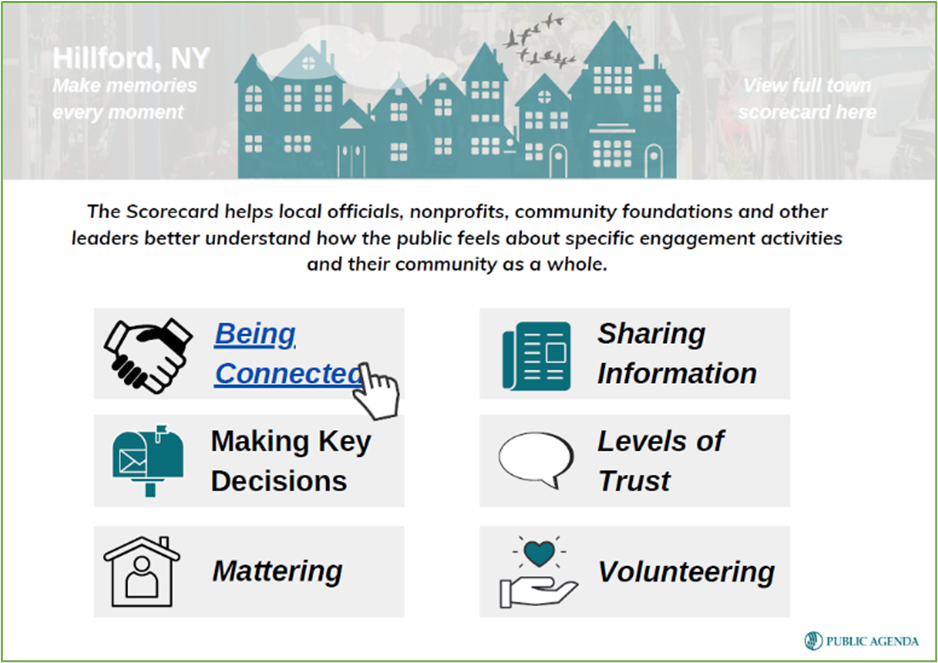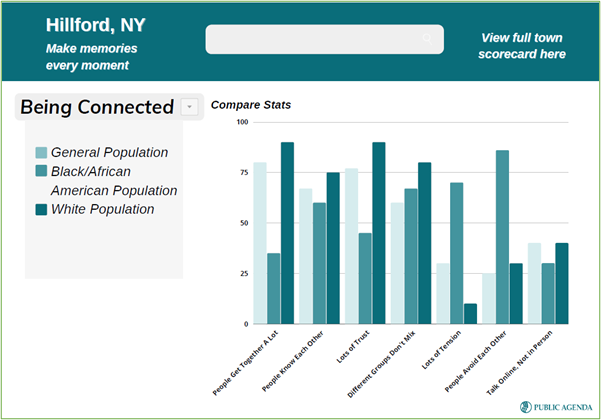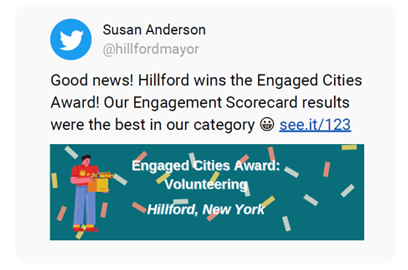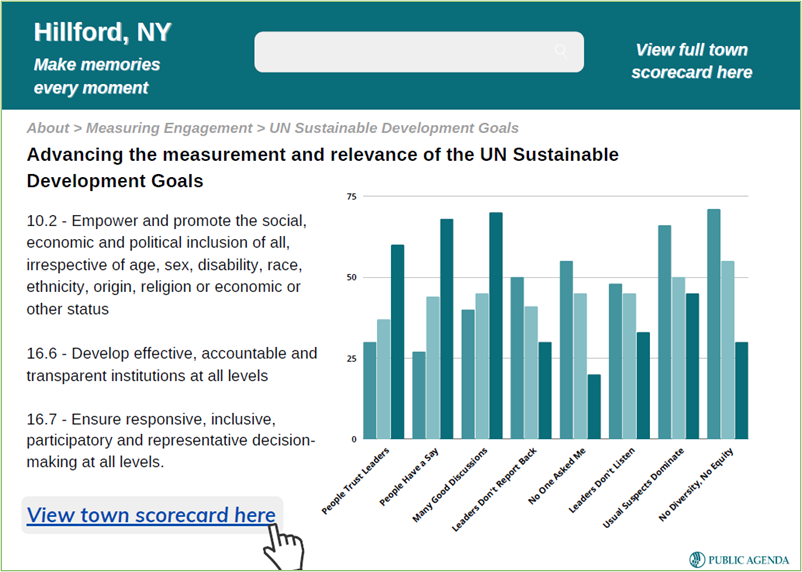Improving Democracy by Rating It
Using the Civic Engagement Scorecard
Why measure democracy – and how?
The strength of democracy is critical not only to our political future, but to our quality of life. Strong connections between residents, robust relationships between people and public institutions, and positive attachments between community members and the places they live are highly correlated with a range of positive outcomes, from economic vitality to increased public health to greater K-12 student success to resilience in the face of natural disasters.

Image by Mikayla Townsend
These outcomes are particularly evident – and particularly needed – in low-income and marginalized communities, meaning that one of the most effective ways to improve equity is to improve democracy in those places. But to do that, we need to be able to measure democracy and its impacts in more convenient, visible, and participatory ways.
It is particularly important to assess how residents are feeling about democracy. Do people feel informed? Connected? Do they have a meaningful say in decision-making, and are their efforts to solve problems supported and honored? Most official opportunities to engage – such as official public meetings where citizens have ‘three minutes at the microphone’ to address their elected representatives – aren’t evaluated at all. If they were, officials would be more likely to realize how deeply unpopular these meetings are, and how damaging they are to public trust.
Based on interactive, tag-based systems like Yelp and RateMyProfessor, the Civic Engagement Scorecard gives people a fast, convenient way to give input through their phones and other devices. It has three segments, each one a single screen on a phone or other device:
- allows people to rate new engagement efforts by public institutions
- helps measure how informed, connected, respected, and supported people feel, in a way that emphasizes the value of engagement as a community-wide, cross-institutional priority
- collects demographic information using the same tag-based system.

Image by Mikayla Townsend
Unlike researcher-centered tools like surveys and focus groups, the Civic Engagement Scorecard is a user-centered tool – it allows people to rate whatever they want, in ways that work for them. We think that the combination of researcher-centered and user-centered approaches to measurement has more potential than either method on its own.
With the Civic Engagement Scorecard as one of our core tools, we can leverage the power of civic measurement in three ways:
Rewarding good practices and illuminating bad ones – The Civic Engagement Scorecard can help democratic innovators by giving them immediate feedback on the engagement processes, platforms, meetings, and apps they develop. It can also create more visibility for their efforts, depending on how the results are shared. Meanwhile, users could also rate conventional engagement opportunities like school board meetings and public hearings – in the process, they would be demonstrating that these tired, pro forma events can be improved.
 Exploring the impacts of democracy on social problems – It is difficult to track the outcomes of engagement because of the civic measurement gap: in most places, we have data for broad societal trends and we have evaluations of individual programs, but we don’t have enough data and analysis on what lies between the two. Since the Scorecard allows people to both rate a specific engagement opportunity and rate their community in terms of connectedness, information/transparency, decision-making, and service, it will yield data to help make that connection and explore the efficacy of democratic innovations for addressing health, poverty, education, safety, and other social problems.
Exploring the impacts of democracy on social problems – It is difficult to track the outcomes of engagement because of the civic measurement gap: in most places, we have data for broad societal trends and we have evaluations of individual programs, but we don’t have enough data and analysis on what lies between the two. Since the Scorecard allows people to both rate a specific engagement opportunity and rate their community in terms of connectedness, information/transparency, decision-making, and service, it will yield data to help make that connection and explore the efficacy of democratic innovations for addressing health, poverty, education, safety, and other social problems.
Creating healthy competition – By providing new kinds of data, involving community members in producing that data, and making the data visible to all, the Civic Engagement Scorecard will make it possible to encourage healthy competition between institutions and between communities. Public dashboards can make the differences apparent, and awards programs can recognize leaders, organizations, and jurisdictions that are successful at strengthening democracy.

Image by Mikayla Townsend
Featured Success Stories and Resources
Thank You to Our Key Partners



